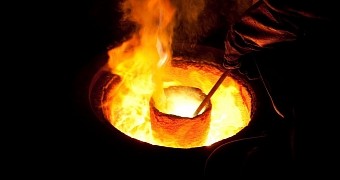Titanium may not be the toughest metal on earth, but it is close, and it is also very light and reasonably easy to process to boot. However, it is quite a bit more difficult to work with than, say, iron and steel.
Fortunately, there is now an equally good but easier to make alternative, so long as designers, engineers, architects and such do not mind the electrical conductivity.
Basically, a new kind of steel alloy has been created, one that is the equal of titanium in terms of toughness and weight.
The main reason the newest breakthrough was so large is that it does not rely on mixing steel with aluminum. Instead, nanoengineering showed its worth.
Nanoscale-engineered steel
The main problem with steel-aluminum alloys is that raising the aluminum proportion badly affected the way the material behaved under tensile stress.
In layman’s terms, that means that more aluminum caused the alloy to fracture more easily, as odd as it sounds. Then again, aluminum itself is not so much flexible as it is vulnerable to permanent deformities. Like really hard Putty.
Obviously, that trait and steel's natural hardness and flexibility do not mix very well, hence the limitations of such alloys.
The new type of steel is made differently. Researchers at the Graduate Institute of Ferrous Technology (GIFT) at Pohang University of Science and Technology in South Korea came up with the idea.
They took the normal steel grain structure and had it uniformly covered and mixed with nanometer-sized B2 intermetallic compounds (amalgam of two metals with equal numbers of atoms).
Normally, this would have done harm instead of good, but mixing the additives with nickel actually helped increase the ductility.
Trial forges have not been done yet, but they should be done later this year in collaboration with POSCO. If the problem of brittle intermetallic compound alloys has finally been solved, we can expect great things from the future.
Practical applications
Lighter steel girders are one thing. Architects are going to love these things, right after they figure out the match between them and concrete at least. Assuming the trial level is passed at least.
Even if architecture is a bust, vehicles could still benefit, since the steel could replace both normal steel and aluminum entirely.

 14 DAY TRIAL //
14 DAY TRIAL //